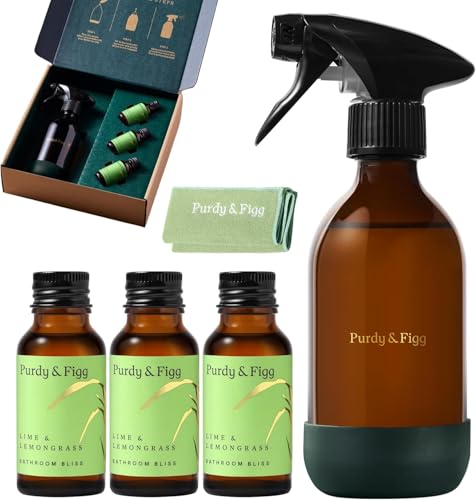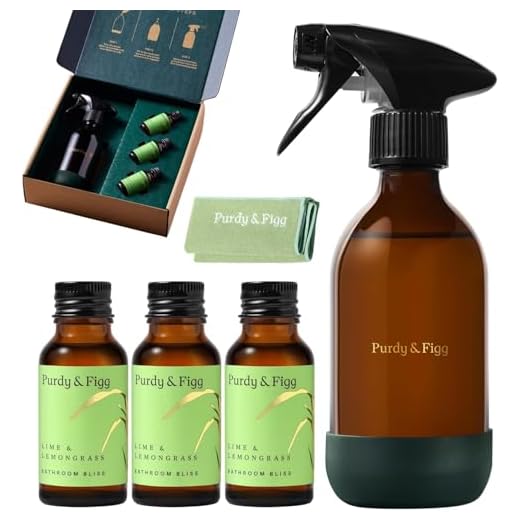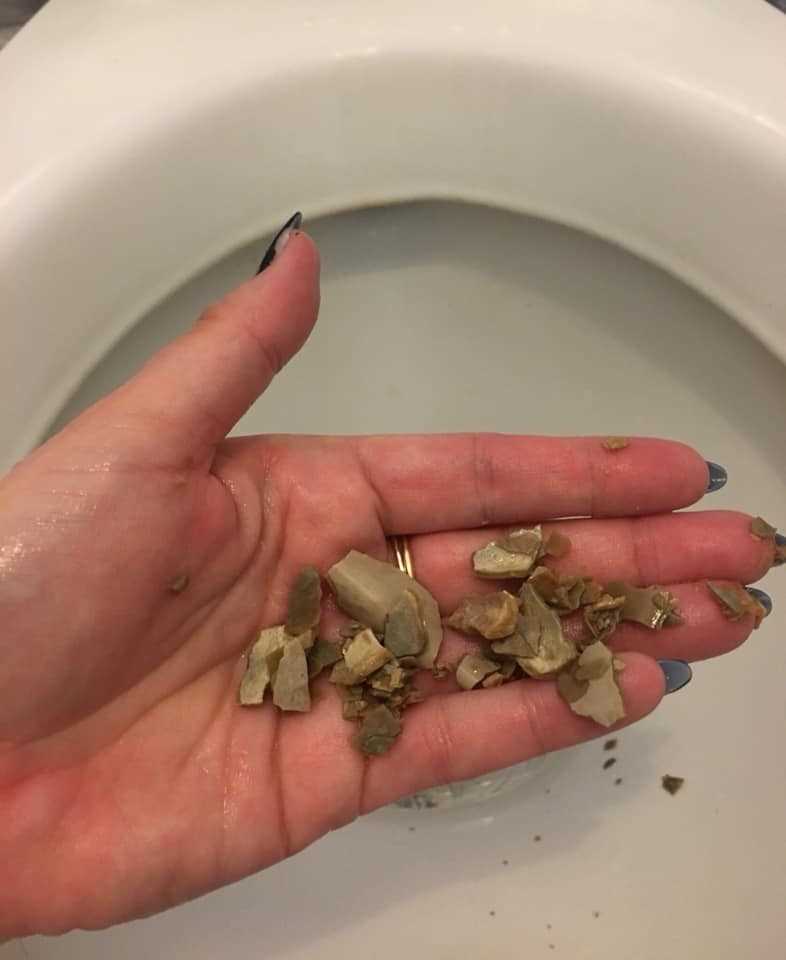


Limescale buildup can be a frustrating and unsightly problem in many homes. It often occurs in areas where hard water is a common issue, such as faucets, showerheads, and toilet bowls. Removing stubborn limescale buildup can be a challenge, but with the right methods, it can be effectively eliminated.
One method for removing stubborn limescale buildup is using vinegar. Vinegar is a natural and affordable option that can break down the minerals and dissolve the limescale. Simply soak a cloth or sponge in vinegar and apply it to the affected area. Let it sit for a few hours or overnight, then scrub the area with a brush or sponge. Rinse the area thoroughly with water to remove any residue.
Another effective method is using a commercial descaling product. These products are specifically designed to remove limescale buildup and often come in the form of sprays or gels. It’s important to follow the manufacturer’s instructions and use the product in a well-ventilated area. Apply the descaler to the affected area, let it sit for the recommended amount of time, then scrub and rinse the area as directed.
In some cases, more stubborn limescale buildup may require a stronger approach. One option is to use a pumice stone. Wet the stone and gently scrub the limescale buildup, being careful not to scratch the surface. This method should be used with caution on delicate or easily damaged surfaces.
Regardless of the method you choose, it’s important to regularly clean and maintain your fixtures to prevent limescale buildup. This can be done by wiping down surfaces with a vinegar solution or using a descaling product on a regular basis. By taking proactive measures, you can keep your fixtures looking clean and limescale-free.
Remember, when dealing with limescale buildup, it’s important to be patient and persistent. Eliminating stubborn limescale may take some time and effort, but with the right methods, you can restore your fixtures to their former shine.
Methods to Get Rid of Stubborn Limescale Deposits
Limescale deposits can be a nuisance, causing faucets and fixtures to lose their shine and reducing water flow. Here are some effective methods to remove stubborn limescale buildup:
1. Vinegar Solution

Vinegar is a natural and effective way to remove limescale. Mix equal parts white vinegar and water in a spray bottle. Spray the solution onto the affected areas and let it sit for a few minutes. Then, scrub the deposits with a brush or sponge. Rinse the area thoroughly with water.
2. Lemon Juice
Similar to vinegar, lemon juice also contains acid that can dissolve limescale. Squeeze fresh lemon juice onto the limescale deposits or dip a cloth in lemon juice and apply it to the affected areas. Let it sit for a few minutes, then scrub and rinse thoroughly.
3. Baking Soda Paste
Baking soda is an abrasive cleaner that can help remove limescale. Make a paste by mixing baking soda with a small amount of water. Apply the paste to the deposits and let it sit for about 15 minutes. Scrub the area with a brush or sponge, then rinse thoroughly with water.
4. Commercial Limescale Remover
If the limescale deposits are particularly stubborn, you may need to use a commercial limescale remover. These products are specifically formulated to dissolve limescale. Follow the instructions on the label and wear gloves and protective eyewear while using them.
5. Mechanical Methods
If the above methods don’t work, you can try using a scalpel or razor blade to scrape away the limescale deposits. Be careful not to damage the surface underneath. Another mechanical method is to use a wire brush or abrasive scrub pad to scrub away the deposits. This method may require some elbow grease but can be effective.
6. Prevention
Preventing limescale buildup is easier than removing stubborn deposits. Use a water softener to reduce the hardness of water, which can lead to limescale formation. Regularly clean and wipe down faucets and fixtures to prevent buildup.
By following these methods, you can effectively remove stubborn limescale deposits and keep your faucets and fixtures looking clean and shiny.
Chemical Cleaners for Limescale Removal

When it comes to tackling stubborn limescale buildup, sometimes a little extra help is needed. Chemical cleaners specifically designed for limescale removal can be effective in breaking down and removing tough limescale stains. Here are a few popular options:
1. Vinegar:
Vinegar is a natural and versatile cleaner that can be used for many household cleaning tasks, including limescale removal. It contains acetic acid, which works to dissolve and break down the mineral deposits.
To use vinegar for limescale removal, mix equal parts white vinegar and water in a spray bottle. Spray the solution onto the affected area and let it sit for a few minutes. Scrub the area with a brush or sponge, then rinse thoroughly with water. Repeat the process if necessary.
2. Lime Away:
Lime Away is a popular chemical cleaner specifically formulated to remove limescale, rust, and hard water stains. It contains stronger acids that can effectively dissolve mineral deposits.
To use Lime Away, read and follow the instructions on the product label. Apply the cleaner to the limescale buildup, let it sit for the recommended amount of time, and then scrub the area with a brush. Rinse thoroughly with water to remove any residual cleaner.
3. CLR Calcium, Lime & Rust Remover:

CLR Calcium, Lime & Rust Remover is another powerful chemical cleaner that is commonly used for limescale removal. It is specifically designed to dissolve and remove calcium, lime, and rust stains.
To use CLR Calcium, Lime & Rust Remover, apply the cleaner directly to the limescale buildup and let it sit for a few minutes. Scrub the area with a brush, then rinse thoroughly with water. Be sure to follow the instructions on the product label for best results.
4. Descaling Solutions:
There are various descaling solutions available on the market that are specifically formulated to remove limescale buildup. These solutions often contain a combination of strong acids and other active ingredients that work together to dissolve and remove the mineral deposits.
Follow the instructions provided with the descaling solution you choose, as the application methods may vary. Typically, you will need to apply the solution to the limescale buildup, let it sit for a specific amount of time, scrub the area if necessary, and then rinse thoroughly with water.
It is important to wear gloves and work in a well-ventilated area when using chemical cleaners for limescale removal. Be sure to read and follow all safety precautions and instructions provided with the product.
Remember to test a small, inconspicuous area first to ensure that the cleaner will not damage or discolor the surface you are cleaning.
While chemical cleaners can be effective for limescale removal, it is important to use them responsibly and in accordance with the instructions provided. Always take proper safety precautions and consider eco-friendly alternatives whenever possible.
Natural Remedies for Tackling Limescale
1. Vinegar
Vinegar is a versatile and effective natural remedy for tackling limescale. It contains acetic acid, which helps dissolve and remove limescale deposits. You can use white vinegar or apple cider vinegar for this purpose.
To use vinegar to remove limescale, fill a spray bottle with vinegar and spray it directly onto the affected areas. Let the vinegar sit for a few minutes, then scrub the area with a brush or sponge. Rinse thoroughly with water.
2. Lemon Juice
Lemon juice is another natural remedy that can help tackle limescale. The citric acid present in lemon juice can break down limescale deposits and make them easier to remove.
To use lemon juice, cut a lemon in half and rub it directly onto the limescale. Alternatively, you can squeeze the lemon juice into a spray bottle and apply it to the affected areas. Let it sit for a few minutes, then scrub and rinse thoroughly.
3. Baking Soda
Baking soda, also known as sodium bicarbonate, is a natural cleaner that can effectively tackle limescale. Its abrasive texture helps remove stubborn deposits without scratching or damaging the surface.
To use baking soda, make a paste by mixing it with water until it forms a thick consistency. Apply the paste to the limescale and let it sit for a few minutes. Scrub the area with a brush or sponge, then rinse thoroughly.
4. Salt
Salt is another natural remedy that can help remove limescale. It can be used in combination with vinegar or lemon juice for added effectiveness.
To use salt, sprinkle it onto the limescale and let it sit for a few minutes. Then, scrub the area with a brush or sponge and rinse thoroughly with water.
5. Citric Acid
Citric acid is a natural acid that can effectively break down limescale. It is commonly found in powdered form and can be purchased from most supermarkets or online.
To use citric acid, dissolve it in water according to the instructions on the package. Dampen a cloth with the solution and apply it to the limescale. Let it sit for a few minutes, then scrub and rinse thoroughly.
6. Steam Cleaning
Using a steam cleaner is another natural method for tackling limescale. The high temperature of the steam can effectively break down and dissolve limescale deposits.
To use a steam cleaner, follow the instructions provided by the manufacturer. Direct the steam onto the affected areas and move the cleaner back and forth to ensure thorough coverage. Wipe away any excess moisture with a cloth or towel.
Conclusion

These natural remedies can be effective in removing stubborn limescale buildup. However, it’s important to note that the effectiveness may vary depending on the severity of the limescale and the surface it’s on. It’s always a good idea to test a small area first and follow the manufacturer’s instructions for any specific cleaning products or appliances. Regular maintenance and cleaning can also help prevent limescale buildup in the future.
Preventing Limescale Buildup
Limescale buildup can be a stubborn problem, but taking preventive measures can help minimize its formation. Here are some effective methods to prevent limescale buildup:
1. Regular Cleaning:

Regularly clean the areas prone to limescale buildup, such as faucets, showerheads, and bathroom fixtures. Use vinegar or a limescale remover to remove any existing buildup and prevent it from hardening.
2. Water Softening:
If you live in an area with hard water, consider installing a water softener. Water softeners use special salts to lower the mineral content, reducing the formation of limescale. Consult with a professional to determine the right water softener for your needs.
3. Using Descaling Products:
Use descaling products regularly to break down any limescale buildup in your plumbing system. These products are designed to dissolve and remove limescale deposits, keeping your pipes and appliances free from obstructions.
4. Wipe Surfaces Dry:
After using water on surfaces prone to limescale buildup, such as countertops and tiles, make sure to wipe them dry. This will prevent water droplets from evaporating and leaving behind mineral deposits.
5. Stainless Steel Cleaner:
If you have stainless steel appliances or fixtures, use a stainless steel cleaner to prevent limescale and mineral deposits from sticking. Regularly clean and polish stainless steel surfaces to maintain their shine and prevent buildup.
6. Adjusting Water Temperature:
Set your water heater temperature to a level that does not promote limescale formation. Water temperatures that are too high can accelerate limescale buildup, so try to keep it within the recommended range.
7. Using Filters:

Install filters on taps and showerheads to trap minerals and prevent limescale buildup. Filters can help to reduce the amount of minerals that enter your plumbing system, reducing the risk of limescale deposits.
8. Avoiding Harsh Cleaning Products:
When cleaning areas prone to limescale, avoid using harsh chemical cleaning products. These products can cause damage to surfaces and may even speed up the limescale buildup. Opt for more gentle, limescale-specific cleaners instead.
9. Regular Maintenance:
Perform regular maintenance on your appliances and plumbing system to ensure they are functioning properly. This includes checking for any leaks or drips that can exacerbate limescale buildup.
10. Using Citric Acid:
Citric acid can be an effective natural option for preventing limescale buildup. Use citric acid solutions or homemade mixtures to clean and remove limescale from your fixtures and appliances.
By implementing these preventive measures, you can reduce limescale buildup and maintain the efficiency and lifespan of your plumbing system and appliances.
Professional Limescale Removal Services
If you’ve been struggling with stubborn limescale buildup in your home or business, it may be time to consider professional limescale removal services. These services utilize specialized techniques and equipment to effectively remove limescale and restore the surfaces to their original condition.
Here are some reasons why professional limescale removal services might be the right choice for you:
- Expertise: Professional limescale removal technicians have the knowledge and experience to properly identify the type of limescale and apply the most effective removal methods.
- Efficiency: Limescale removal can be a time-consuming and labor-intensive process. By hiring professionals, you can save time and effort, allowing you to focus on other tasks while they handle the limescale problem.
- Specialized Equipment: Limescale removal services use state-of-the-art equipment and tools designed specifically for removing limescale. This ensures a thorough and efficient removal without causing damage to the surfaces.
- Safe and Environmentally Friendly: Professional limescale removal services use safe and eco-friendly cleaning products that are specially formulated to dissolve limescale without posing any risk to your health or the environment.
- Long-Term Solutions: While DIY limescale removal methods may provide temporary relief, professional services offer long-term solutions. They can provide advice and recommendations on how to prevent limescale buildup in the future, helping you to maintain clean and limescale-free surfaces.
In conclusion, professional limescale removal services are a reliable and effective solution for removing stubborn limescale buildup. By hiring experts who have the knowledge, expertise, and specialized equipment, you can ensure that your surfaces are restored to their original condition and prevent future limescale problems.
Regular Maintenance to Keep Limescale at Bay
1. Clean your surfaces regularly
One of the most effective ways to prevent limescale buildup is to clean your surfaces regularly. Use a non-abrasive cleaner and a soft cloth to wipe down your faucets, showerheads, and other areas prone to limescale. This can help remove any existing buildup and prevent it from accumulating over time.
2. Use a water softener
If you live in an area with hard water, consider installing a water softener in your home. Water softeners work by removing the minerals that cause limescale from your water supply. This can significantly reduce limescale buildup in your pipes, appliances, and fixtures.
3. Try vinegar or lemon juice
If you prefer a natural cleaning solution, vinegar or lemon juice can be effective against limescale. Simply soak a cloth or sponge in vinegar or lemon juice and scrub away the limescale deposits. Rinse thoroughly with water afterward to remove any residue.
4. Use descaling products
There are a variety of descaling products available on the market that are specifically designed to remove limescale. These products are usually formulated with ingredients that break down and dissolve the mineral deposits. Follow the instructions on the product label for best results.
5. Wipe down your shower after each use
To prevent limescale buildup in your shower, make a habit of wiping down the surfaces after each use. This can help remove any water droplets that contain mineral deposits before they have a chance to dry and form limescale.
6. Use a shower filter
Consider installing a shower filter that is designed to remove impurities and minerals from your water. This can help reduce limescale buildup on your showerhead and other shower fixtures.
7. Regularly check and maintain your appliances

Appliances such as kettles, coffee makers, and washing machines can also be prone to limescale buildup. Regularly check these appliances for any signs of limescale and follow the manufacturer’s instructions for descaling and cleaning.
8. Consider a water conditioner
A water conditioner, similar to a water softener, can also be effective in preventing limescale. These devices work by altering the chemical composition of the water, making it less likely to form limescale deposits. Consult a professional to determine if a water conditioner is suitable for your home.
9. Remove limescale regularly
If you notice limescale buildup in your home, it’s important to remove it as soon as possible. The longer limescale is left untreated, the more difficult it can be to remove. Use a suitable cleaning product or natural remedy, and follow the instructions for safe and effective removal.
10. Consider professional help
If you’re facing stubborn limescale buildup that you can’t remove on your own, consider seeking professional help. Plumbers and cleaning services have specialized tools and expertise to tackle even the toughest limescale deposits.
FAQ
What is limescale and how does it form?
Limescale is a hard, chalky deposit that forms when hard water evaporates and leaves behind mineral deposits. It mainly consists of calcium carbonate, which builds up on surfaces like faucets, showerheads, and pots and pans over time.
What are some common household products that can be used to remove limescale?
There are several common household products that can effectively remove limescale, such as vinegar, lemon juice, baking soda, and citric acid. These products work by breaking down the mineral deposits and dissolving the limescale.
How can I prevent limescale buildup in the first place?
To prevent limescale buildup, it’s important to regularly clean and descale your appliances and fixtures. You can also install a water softener or use a descaling product regularly to reduce the mineral content in your water.
Are there any commercial limescale removers available on the market?
Yes, there are many commercial limescale removers available on the market. These products are specifically designed to remove stubborn limescale buildup and often contain stronger acids or chemicals. However, it’s important to follow the instructions carefully and use them in well-ventilated areas.












